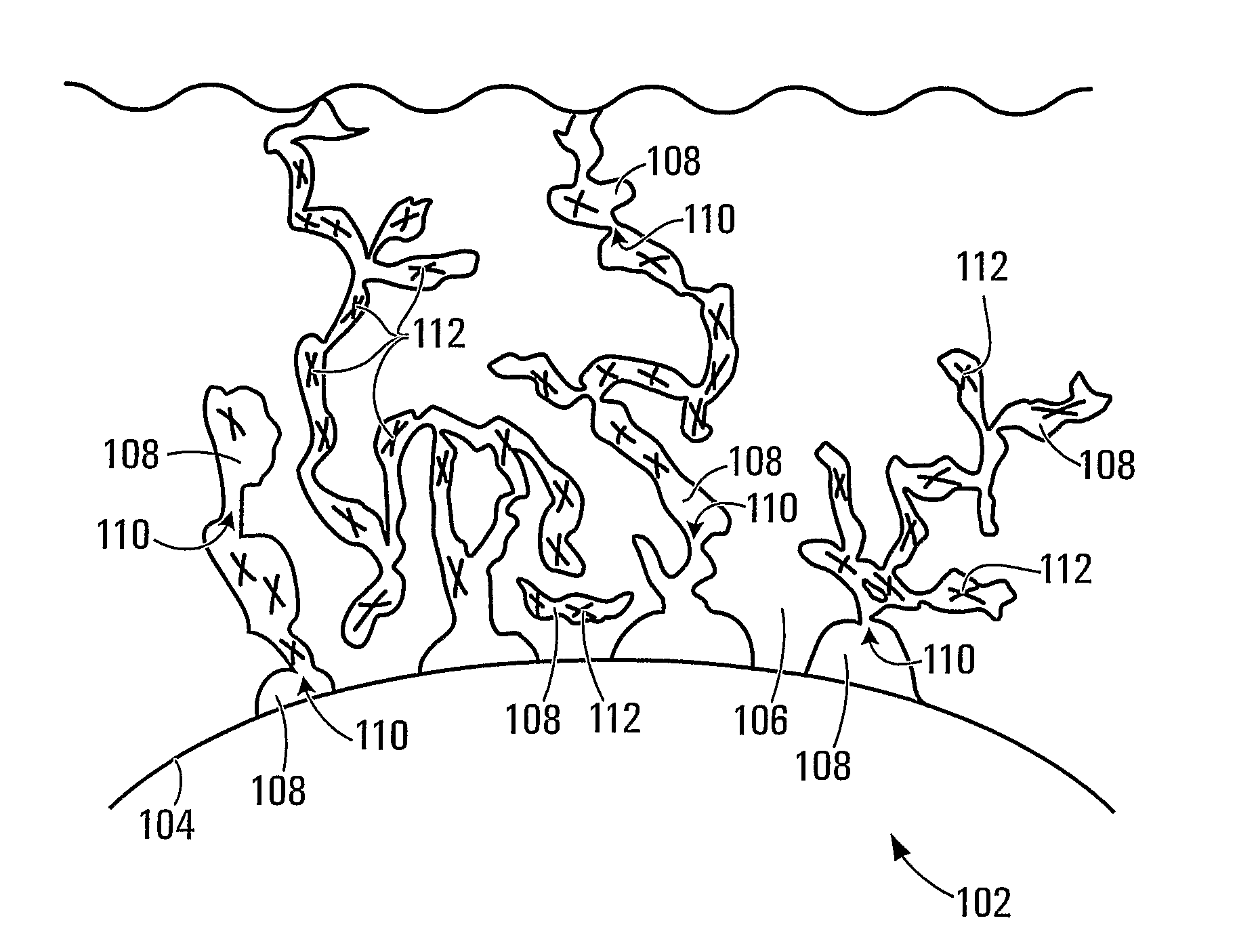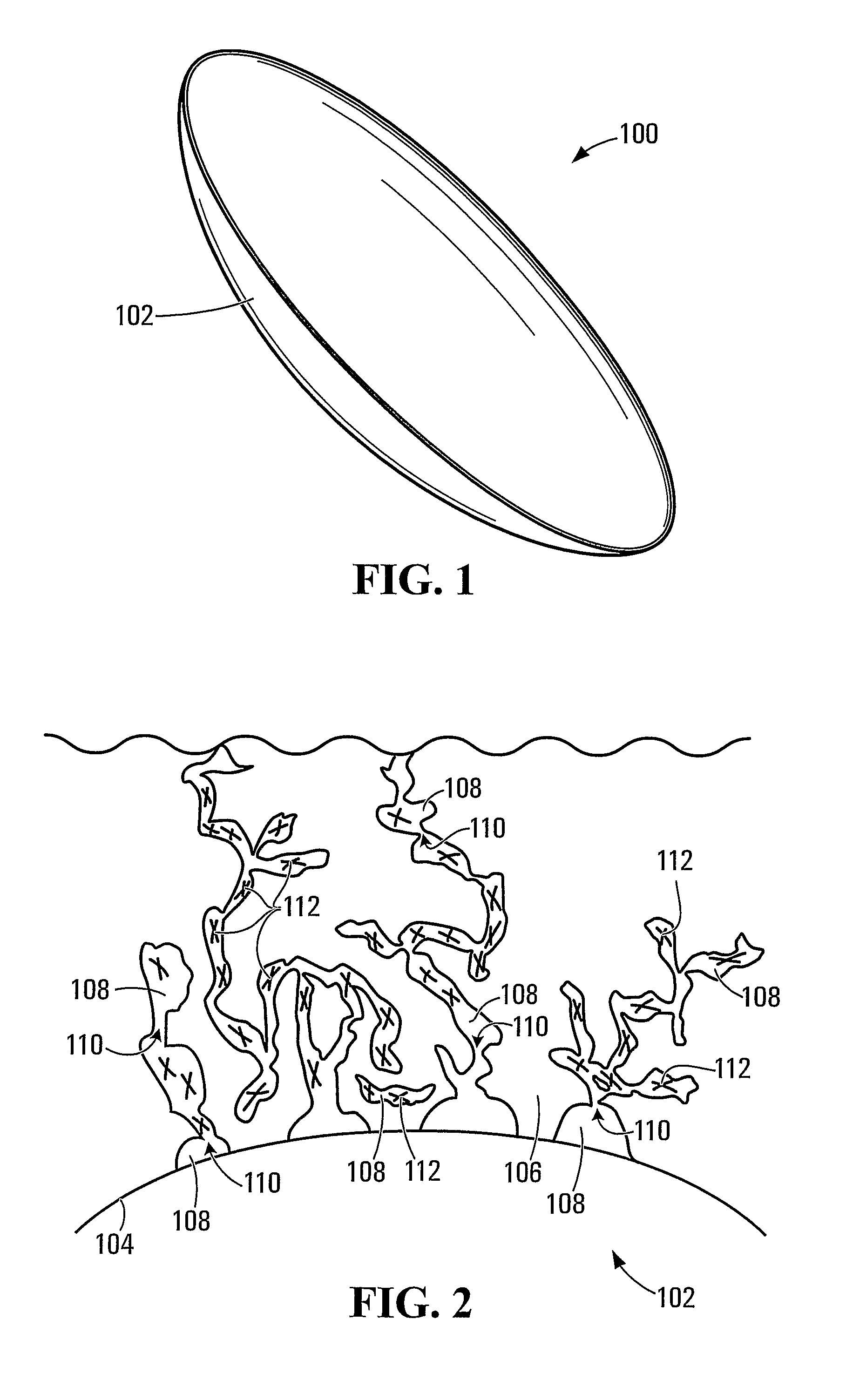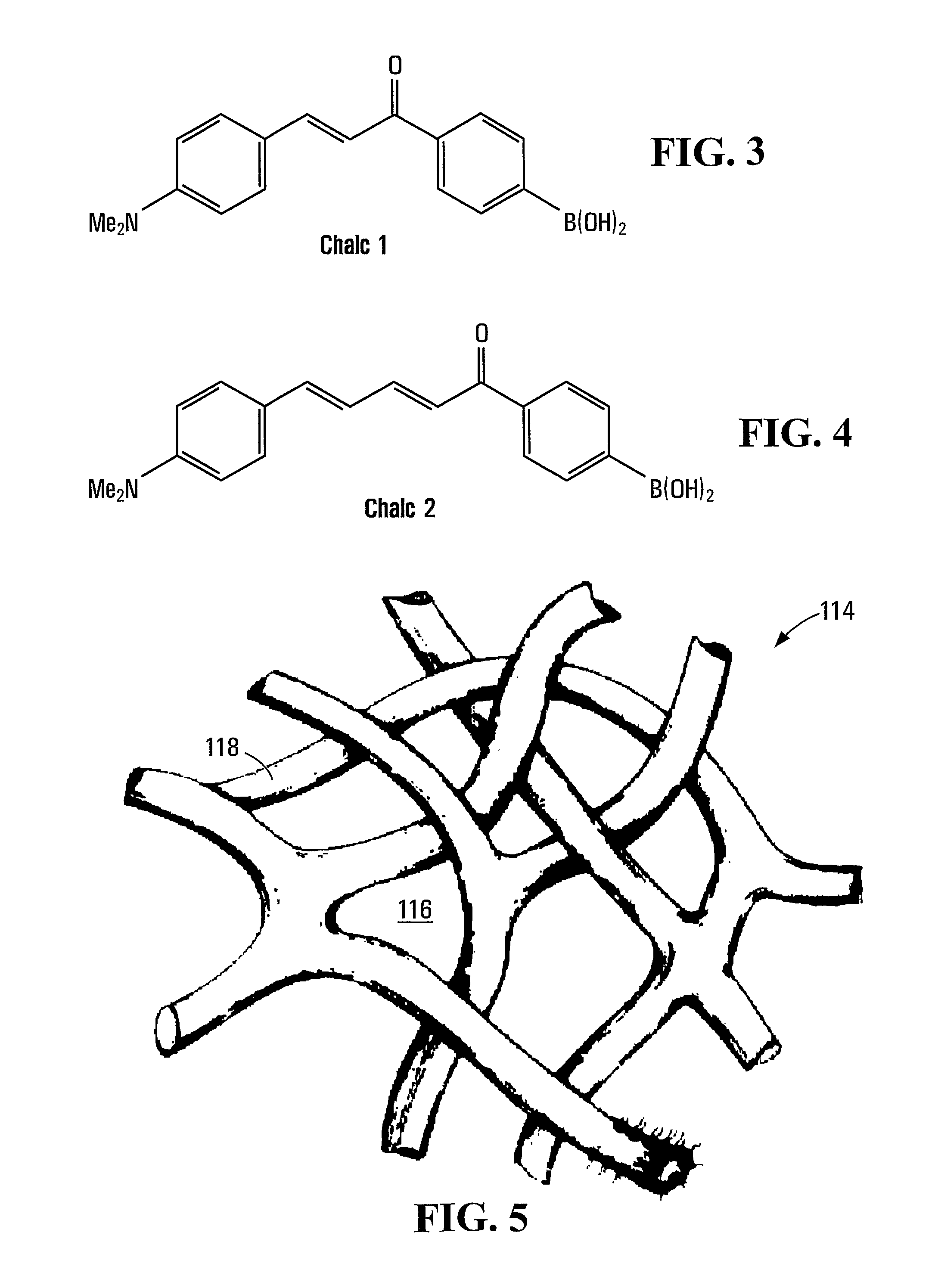Trapping glucose probe in pores of polymer
a polymer and glucose probe technology, applied in the field of measuring glucose level, can solve the problems of poor glucose response of contact lenses, reduced detection sensitivity, user tear, etc., and achieve the effect of preventing leaching of probes
- Summary
- Abstract
- Description
- Claims
- Application Information
AI Technical Summary
Benefits of technology
Problems solved by technology
Method used
Image
Examples
example i
Preparation of Samples I, II and III
[0076]Sample precursor solutions were prepared from mixtures of water; 2-hydroxyethyl methacrylate (HEMA); methyl methacrylate (MMA); ω-methoxy poly(ethylene oxide)40 undecyl α-methacrylate macromonomer (PEO-R-MA-40), as surfactant; Chalc-1, as probe; ethyleneglycol dimethacrylate (EGDMA), as crosslinker; and 2,2-dimethoxy-2-phenyl acetophenone (DMPA), as initiator.
[0077]The Chalc-1 fluorophores used in the precursor solutions were synthesized as described in J. P. Lorand and J. O. Edwards, J. Org. Chem., 1959, vol. 24, pp. 769, the entire contents of which are incorporated herein by reference. The solid Chalc1 sample was orange in color solid and had the following properties: melting point, 157-158° C.; 1H nuclear magnetic resonance (NMR) (CD3OD) (ppm), 3.01 (s, 6H), 6.79-8.05 (m, 10H).
[0078]The calculated results from analylical analysis of the expected molecule formula, C17H18BNO3, were: C, 69.18; H, 6.15; N, 4.75. In comparison, the results me...
example ii
Sample Characterization
[0083]The strain (%), Young's modulus and tensile strength of the sample polymeric membranes of Example I were measured using an Instron™ 4502 microforce tester, according to the ASTM (American Society for Testing and Materials) 638 standard. Samples were of a standard size as dictated by ASTM 638.
[0084]The oxygen permeabilities of the materials were measured by Rehder™ M201T Permeometer.
[0085]Representative results are listed in Table II.
TABLE IISample ISample IISample IIIWater content in polymer (wt %)647476Oxygen permeability162224Tensile strength (MPa)5.74.73.8Young's modulus (MPa)280195120
example 111
Cell Culture in Samples and Viability Assay
[0086]HCECs were seeded on the sample polymer membranes prepared in Example I, supplemented with a serum-free medium until confluence. The serum-free medium contained keratinocyte growth medium supplemented with 10 ng / mL human epidermal growth factor (hEGF), 5 μg / mL insulin, 0.5 μg / mL hydrocortisone, 8.4 ng / mL cholera toxin, 30 μg / mL bovine pituitary extract, 50 μg / mL gentamicin, and 50 ng / mL amphotericin B. The cells were incubated in 5% CO2 at 37° C., with medium change performed every 2 days. The cells formed a confluent epithelial sheet on the polymer membranes after 7 days. The cell cultures were monitored under an inverted phase-contrast microscope. The viability of the cultivated cells was determined by 4′-6-diamidino-2-phenylindole (DAPI) staining. Test results showed that viable HCECs were cultured and proliferated on all tested sample polymer membranes. The cell viability was confirmed by positive staining for DAPI.
PUM
| Property | Measurement | Unit |
|---|---|---|
| pore size | aaaaa | aaaaa |
| size | aaaaa | aaaaa |
| pore size | aaaaa | aaaaa |
Abstract
Description
Claims
Application Information
 Login to View More
Login to View More - R&D
- Intellectual Property
- Life Sciences
- Materials
- Tech Scout
- Unparalleled Data Quality
- Higher Quality Content
- 60% Fewer Hallucinations
Browse by: Latest US Patents, China's latest patents, Technical Efficacy Thesaurus, Application Domain, Technology Topic, Popular Technical Reports.
© 2025 PatSnap. All rights reserved.Legal|Privacy policy|Modern Slavery Act Transparency Statement|Sitemap|About US| Contact US: help@patsnap.com



